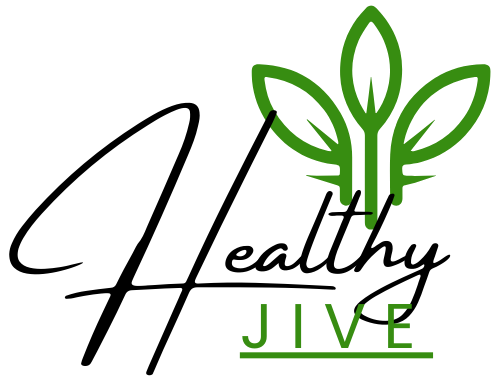
Eating meat has been an integral part of human diets for centuries. However, with the growing concern for the environment, many are questioning whether meat consumption is sustainable. This article explores the various dimensions of this debate and provides suggestions for a balanced, eco-friendly diet.
Understanding the Environmental Impact of Meat Production
Raising animals for consumption demands substantial amounts of resources, including land and water. It also contributes to greenhouse gas emissions, which are detrimental to the climate. According to research, livestock are responsible for 14.5% of global greenhouse gas emissions1.
Nevertheless, the environmental impact of meat production is not uniform across all types of meat. For instance, beef is considered to have a larger environmental footprint than dairy, pork, fish, eggs, or chicken2. Conversely, minimally processed plant foods like vegetables, fruits, legumes, and whole grains have among the lowest environmental impacts2.
Spotlight on Beef Production
Beef production is often pinpointed as a significant contributor to environmental degradation. Yet, it’s essential to consider that certain meat production methods are more sustainable than others.
For instance, in the United States, advancements such as improved breeding and feed additives have made beef production more efficient. These innovations have enabled farmers to feed more people using fewer cattle, thereby reducing environmental impacts34.
Furthermore, studies have suggested that U.S. beef production contributes to 3.7% of national greenhouse gas emissions and less than 0.5% of global emissions567.
The Role of Cattle in Land Management
Interestingly, beef cattle production, which is often criticized for its environmental impact, has potential benefits for land management. Most U.S. cattle are raised on land unsuitable for growing vegetables and other plant foods. Utilizing this land to raise meat can be considered an efficient way to feed people6.
Properly managed cattle can help maintain healthy soil and land. Effective grazing techniques can make land more resilient to floods and keep carbon in the soil instead of releasing it into the atmosphere8.
Understanding Concentrated Animal Feeding Operations (CAFOs)
While all food production has some degree of environmental impact, the method of production plays a significant role. Concentrated Animal Feeding Operations (CAFOs), also known as feedlots in the beef industry, are particularly harmful to the environment9.
Animals in CAFOs are kept in close quarters and not allowed to graze. Their manure contaminates the surrounding land, water, and air, and the crowded conditions can lead to diseases and infections that can spread to humans10.
Sustainable Meat Consumption: A Balanced Approach
While some environmental advocates suggest completely avoiding meat and animal products to combat climate change, many other considerations support keeping animal products in eco-friendly diets.
Here are some tips for incorporating meat as part of an eco-friendly diet:
- Opt for grass-fed or pasture-raised meats: These meats are generally considered more eco-friendly than meat raised in CAFOs and feedlots9.
- Invest in a meat share: Local farms often offer meat share programs where you can purchase a package of sustainably raised meat on a regular basis.
- Reduce meat portions: Incorporating meat in small amounts can help reduce overall intake.
- Set a realistic goal for reducing meat intake: Try implementing a “Meatless Monday” or eating meat only at dinner.
- Spread out one serving of meat over several recipes: You can add small amounts of meat to numerous dishes without making it the main component.
- Focus on adding new plant foods to your diet: If you’re struggling to reduce your meat intake, focus on introducing new plant-based foods to your diet.
The Bottom Line
While meat production generally has a higher environmental footprint than plant foods, the full picture is more nuanced. By moderating meat intake and opting for sustainably raised options when consuming meat, it is possible to follow an eco-friendly diet without eliminating meat entirely.
Footnotes
- Gerber, P.J., Steinfeld, H., Henderson, B., Mottet, A., Opio, C., Dijkman, J., Falcucci, A. & Tempio, G. 2013. Tackling climate change through livestock – A global assessment of emissions and mitigation opportunities. Food and Agriculture Organization of the United Nations (FAO), Rome. ↩
- Poore, J., & Nemecek, T. (2018). Reducing food’s environmental impacts through producers and consumers. Science, 360(6392), 987-992. ↩ ↩2
- Capper, J. L. (2011). The environmental impact of beef production in the United States: 1977 compared with 2007. Journal of animal science, 89(12), 4249-4261. ↩
- Capper, J. L. (2012). Is the grass always greener? Comparing the environmental impact of conventional, natural and grass-fed beef production systems. Animals, 2(2), 127-143. ↩
- Clark, M., & Tilman, D. (2017). Comparative analysis of environmental impacts of agricultural production systems, agricultural input efficiency, and food choice. Environmental Research Letters, 12(6), 064016. ↩
- Herrero, M., Havlík, P., Valin, H., Notenbaert, A., Rufino, M. C., Thornton, P. K., … & Obersteiner, M. (2013). Biomass use, production, feed efficiencies, and greenhouse gas emissions from global livestock systems. Proceedings of the National Academy of Sciences, 110(52), 20888-20893. ↩ ↩2
- EPA (2019). Inventory of U.S. Greenhouse Gas Emissions and Sinks: 1990-2017. U.S. Environmental Protection Agency, Washington, DC, USA. ↩
- Teague, W. R., Apfelbaum, S., Lal, R., Kreuter, U. P., Rowntree, J., Davies, C. A., … & Byck, P. (2016). The role of ruminants in reducing agriculture’s carbon footprint in North America. Journal of Soil and Water Conservation, 71(2), 156-164. ↩
- Mallin, M. A., & Cahoon, L. B. (2003). Industrialized animal production—a major source of nutrient and microbial pollution to aquatic ecosystems. Population and environment, 24(5), 369-385. ↩ ↩2
- Graham, J. P., Leibler, J. H., Price, L. B., Otte, J. M., Pfeiffer, D. U., Tiensin, T., & Silbergeld, E. K. (2008). The animal-human interface and infectious disease in industrial food animal production: rethinking biosecurity and biocontainment. Public health reports, 123(3), 282-299. ↩
